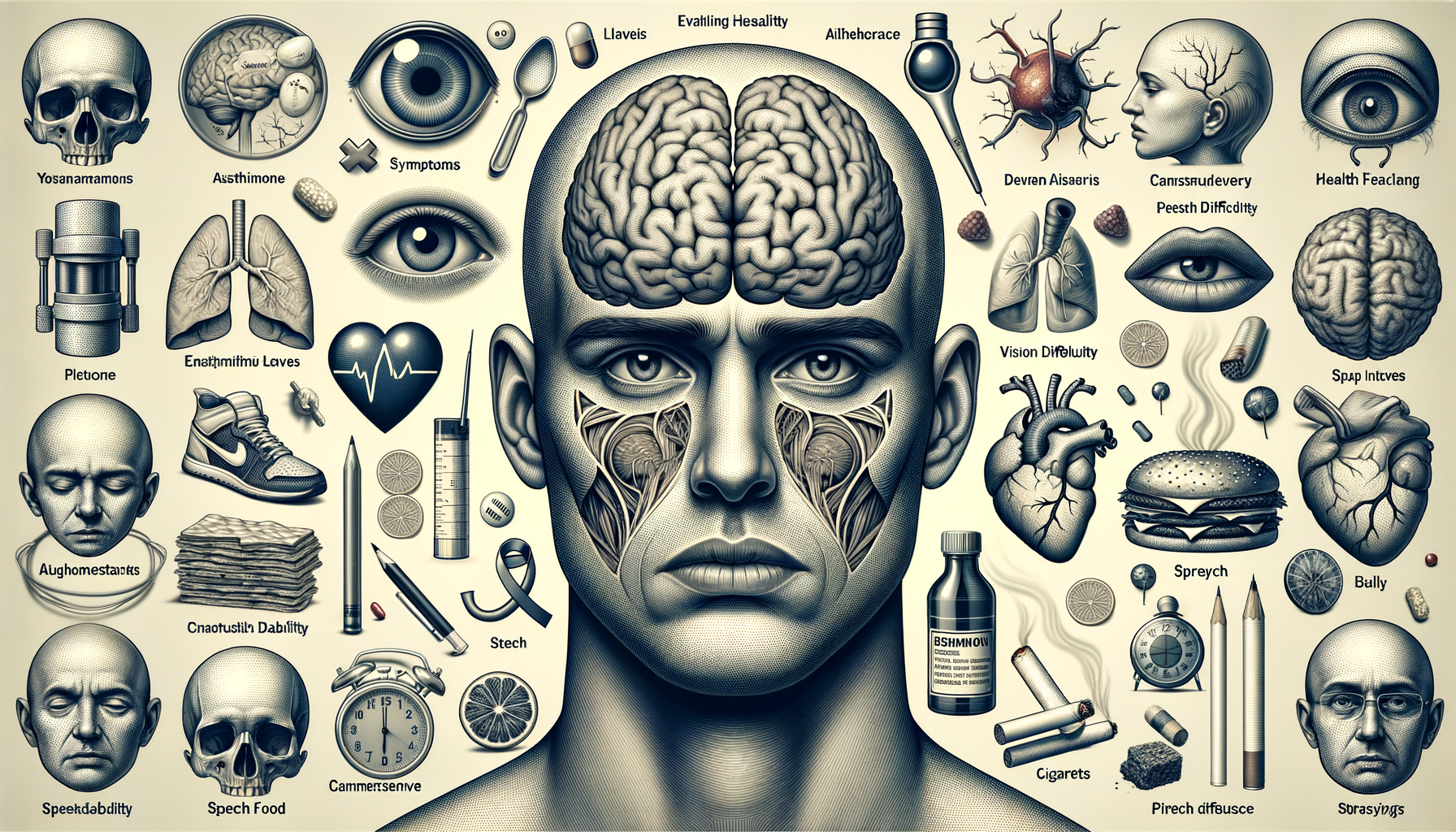Introduction to Stroke Symptoms
Strokes are a leading cause of serious long-term disability, making it vital to understand their warning signs. A stroke occurs when the blood supply to part of the brain is interrupted or reduced, depriving brain tissue of oxygen and nutrients. Recognizing the symptoms early can lead to quicker treatment and a better chance of recovery. In this article, we’ll explore the various symptoms of a stroke, the different types of strokes, and the importance of immediate medical attention.
Recognizing the Common Symptoms of a Stroke
Identifying stroke symptoms early can significantly impact the outcome for the individual affected. Common symptoms include sudden numbness or weakness in the face, arm, or leg, particularly on one side of the body. This might be accompanied by confusion, trouble speaking or understanding speech, and difficulty seeing in one or both eyes. Other symptoms include trouble walking, dizziness, loss of balance or coordination, and a severe headache with no known cause.
It is essential to act fast when these symptoms are observed. The acronym FAST is often used to remember the key signs: Face drooping, Arm weakness, Speech difficulties, and Time to call emergency services. Acting quickly can help reduce the damage caused by a stroke.
Different Types of Strokes and Their Symptoms
There are three main types of strokes: ischemic, hemorrhagic, and transient ischemic attacks (TIAs). Each type has specific symptoms and requires different treatments.
- Ischemic Stroke: This is the most common type, caused by a blockage in an artery supplying blood to the brain. Symptoms often include sudden numbness or weakness, especially on one side of the body, confusion, and difficulty speaking.
- Hemorrhagic Stroke: Occurs when a blood vessel in the brain bursts, leading to bleeding in the brain. Symptoms can include a sudden severe headache, nausea, vomiting, and loss of consciousness.
- Transient Ischemic Attack (TIA): Often called a mini-stroke, TIAs are temporary blockages that resolve themselves. Symptoms are similar to other strokes but usually last only a few minutes to a few hours.
Understanding the differences between these types can aid in recognizing the symptoms and seeking the appropriate medical care.
The Role of Risk Factors in Stroke Symptoms
Several risk factors can increase the likelihood of experiencing a stroke, influencing the symptoms and their severity. These include high blood pressure, smoking, diabetes, high cholesterol, obesity, and a sedentary lifestyle. Additionally, age, family history, and certain medical conditions like atrial fibrillation can also contribute to stroke risk.
Managing these risk factors through lifestyle changes and medication can help reduce the chance of a stroke. Regular check-ups with healthcare providers are crucial for monitoring and controlling conditions that could lead to a stroke.
Conclusion: The Importance of Awareness and Action
Understanding stroke symptoms and acting quickly can save lives and improve recovery outcomes. Awareness of the signs, types, and risk factors associated with strokes is essential for everyone. Educating oneself and others about the importance of recognizing symptoms and seeking immediate medical attention can make a significant difference in the lives of those affected by strokes.
Remember, if you or someone you know experiences symptoms of a stroke, it is crucial to seek medical help immediately. Time is of the essence, and prompt action can lead to better recovery prospects.




Leave a Reply